14 Nov Plant combinations: The Landscaper’s Palette
Plant Combinations: The Landscaper’s Palette
Plants are to a landscaper what soft furnishings are to an interior designer. They “dress” the garden, set the mood and add interest. In this blog we’re looking at plant combinations and how they contribute to the space.
We’re lucky in the UK to be able to grow a really wide variety of plants. From the tallest trees to the smallest foliage plants, they provide landscapers with a rich pallet of colour, texture, scent and movement. These pictures of plant combinations are from projects completed by Holland Landscapes and from my travels. I hope they inspire you to try something new.
Bee-Friendly Plant Combinations
With pollinator numbers under threat, bee-friendly planting is frequently specified by our landscaping clients. I’ve been told that bees seem to favour blue and purple flowers. I’m not 100% sure if that’s the case. However, I do know that they like easy access to pollen and nectar. Also on a bee’s wish-list is a nice long flowering period. So plant combinations need to provide continuity. As one type of flower finishes, another starts blooming.
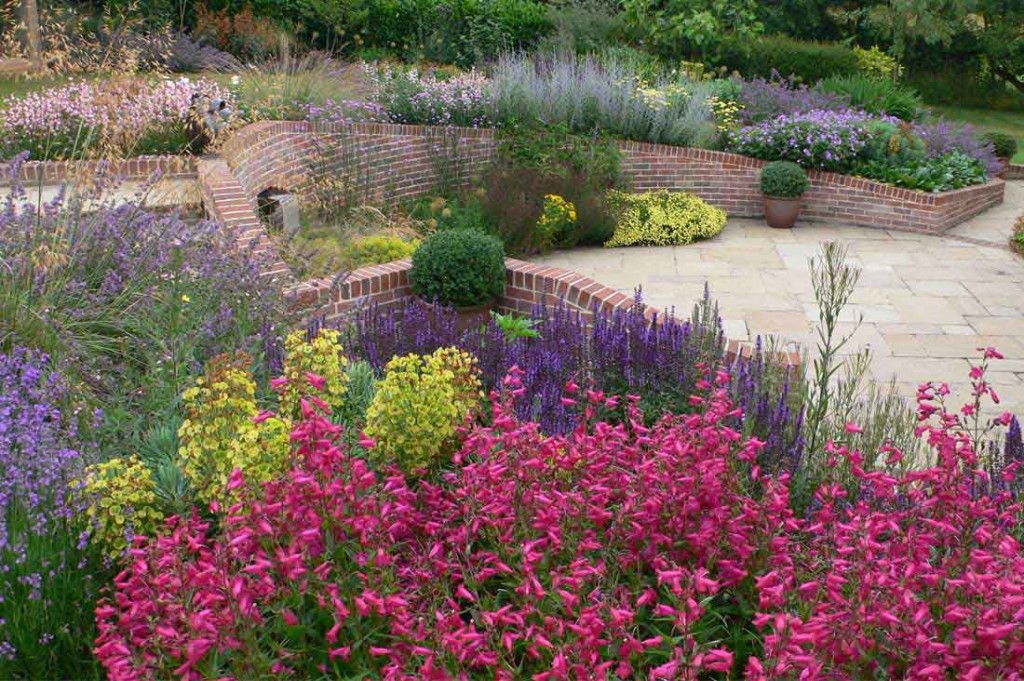
This plant combination in one of our award winning gardens ensures lots of interest for pollinators AND people. Low maintenance plants in swathes create blocks of colour – which is apparently what butterflies prefer.
Foliage plant combinations
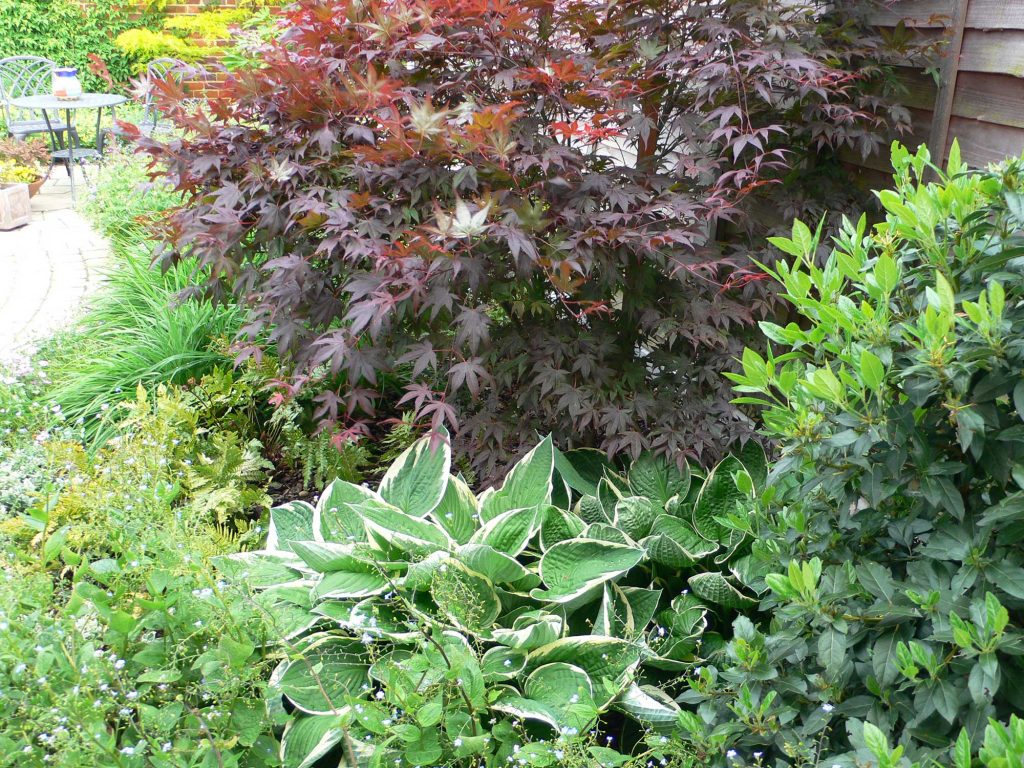
Flowers are not the only plants! In this back garden in Lawford, near Manningtree, most of the colour comes from foliage plants. By combining trees, shrubs and herbaceous plants with contrasting coloured leaves, this planting design is rich, varied and almost jungle-like.
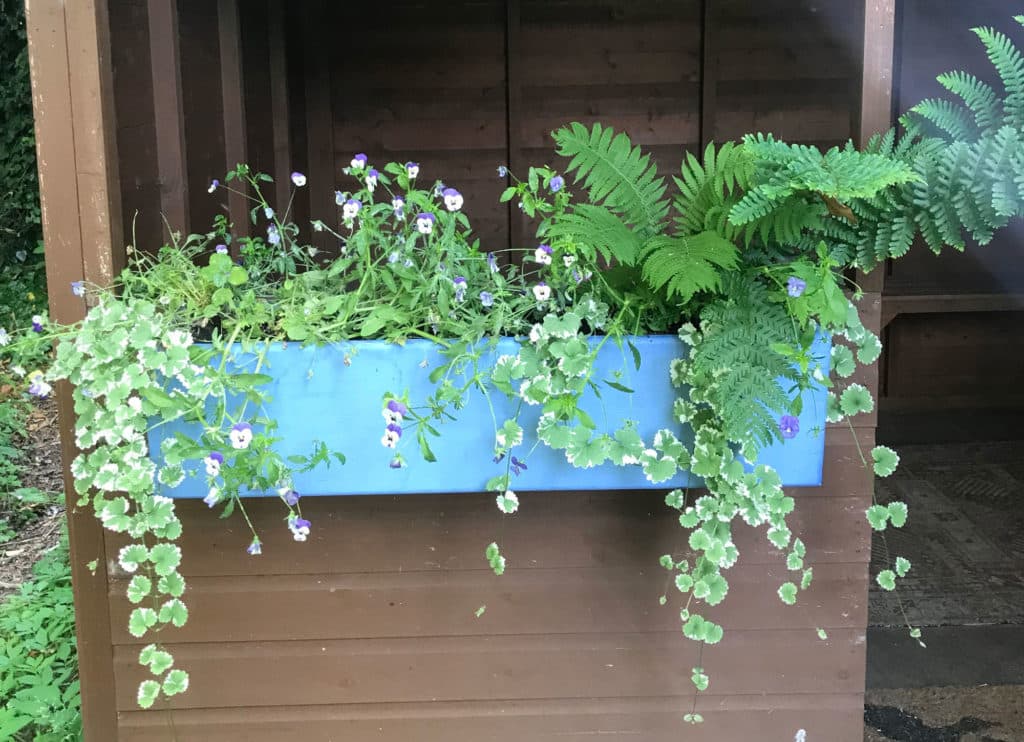
I stumbled across this pretty little window box on my travels. This was in a shady corner of Gooderstone Water Gardens in Norfolk. Shade loving foliage plants mix with heartsease pansies in a charming little design. This illustrates beautifully that a tiny garden can make a big impact.
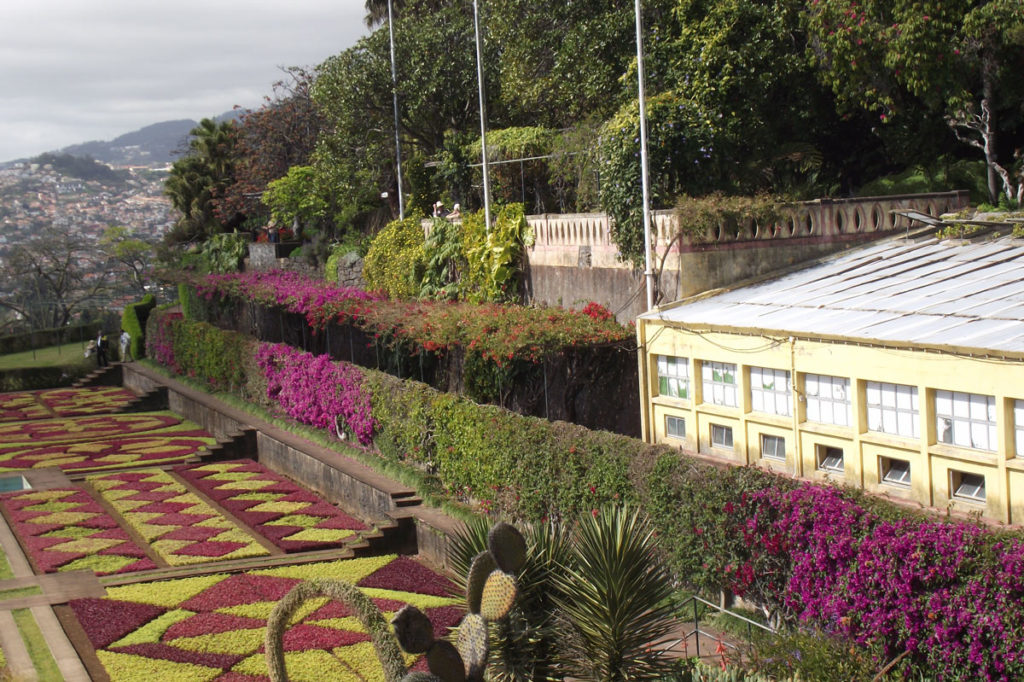
It’s fairly obvious that this isn’t a picture of the Essex countryside. A friend of mine, took this picture in the Botanical Gardens of Madeira. It shows contrasting foliage plants laid out in a geometric pattern. It looks fantastic when viewed from above but I’ll water it’s quite labour intensive. The gardeners have used annual bedding plants keep them trimmed. It reminds me a little of a tudor knot garden and could easily be replicated in the UK if the right plants were selected.
Hot and fiery plant combinations
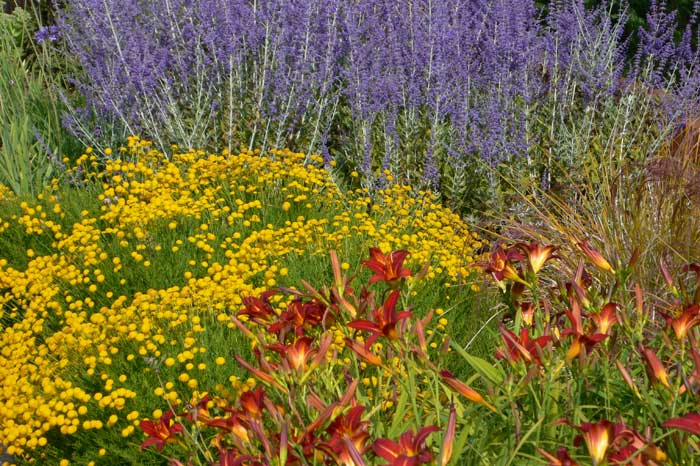
A striking plant combination from a front garden design in Holland on Sea. The blue salvia in the background is there to cool things down! Notice how the yellow at the base of each day lily flower is picked up by the plant beside it. This was a favourite trick of Gertrude Jekyll, an influential garden designer of the late 19th and early 20th centuries. The technique is still used today. The eagle eyed among you might also spot that the grass in the top right hand side of this image is tipped with the same colour as the day lily flowers.
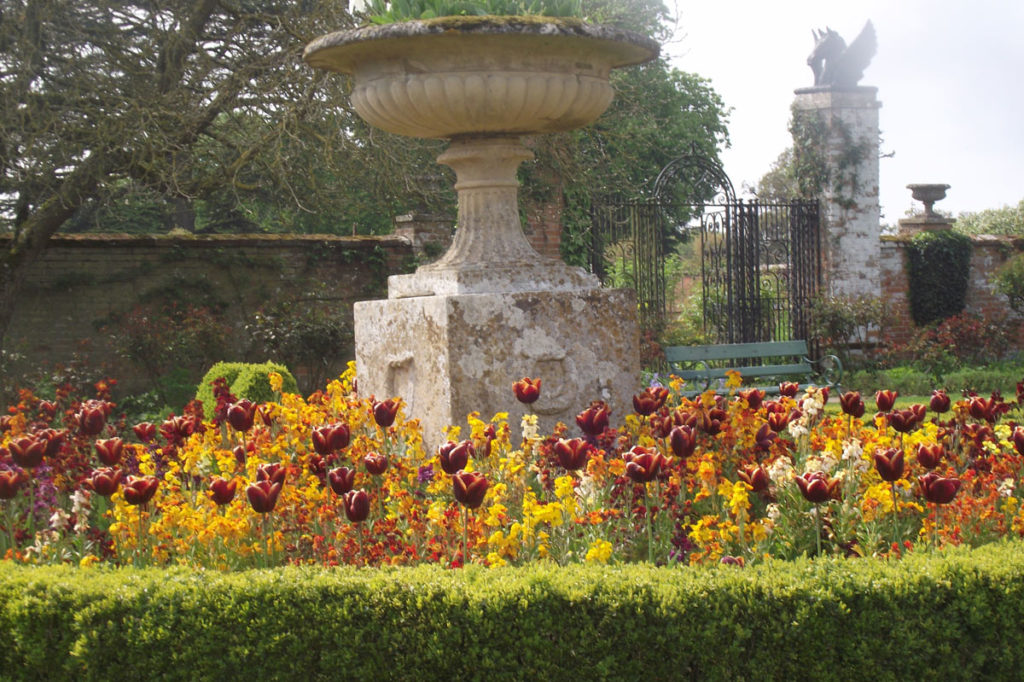
When looking for inspiration for planting combinations, it pays to visit other people’s gardens. This is Helmingham Hall in Suffolk where wallflowers and tulips grow side by side to create a really vibrant show of colour. This type of plant combination needs planning in advance – it would have been set out in the autumn ready for a fiery colour burst in May. Come June, the flowers will have finished and can be replaced with something different.
Both tulips and wallflowers are available in lots of exciting colours. You could go for paler, cooler colours. Or perhaps underplant it with daffs for even earlier colour.
COOling and Relaxing Plant combinations
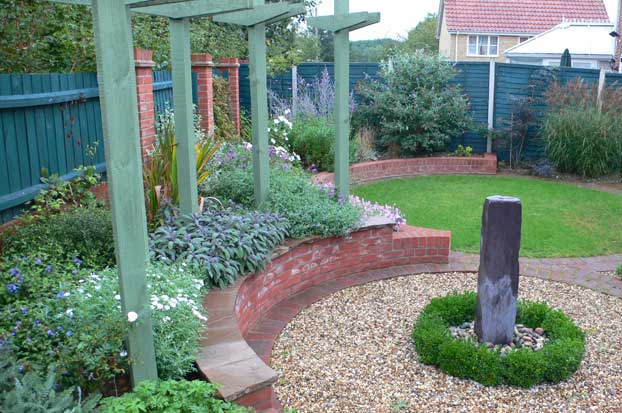
Cool plant combinations tend to be more soothing that hot and fiery colour schemes. In this garden we’ve combined soft grey foliage with pale blue and white flowers. The colours reflect the stone monolith, the fence and the pergola for an overall calming effect.
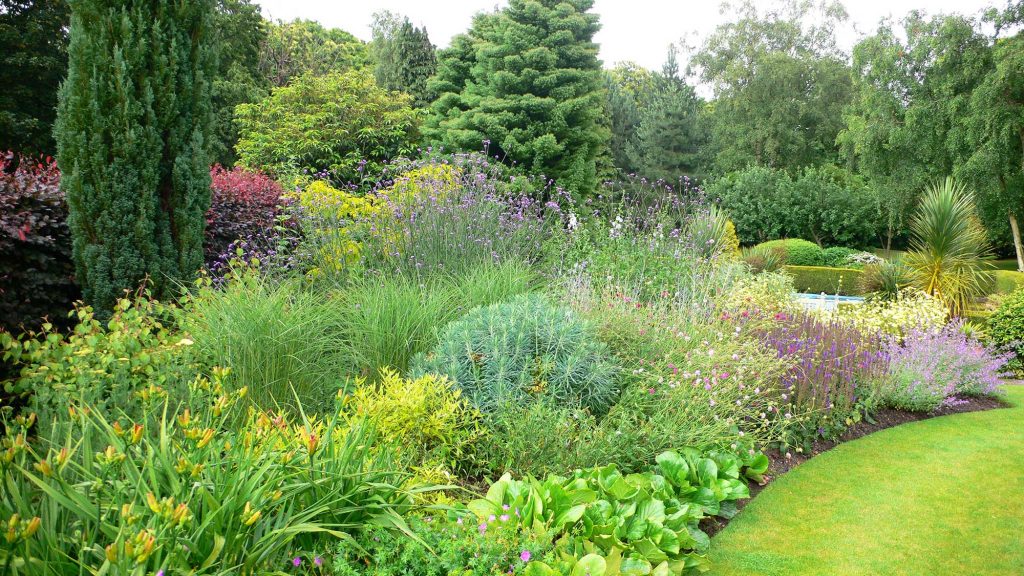
The coolest, most refreshing colour of all is green. This border combines different types of foliage, from the broad leafed bergenia at the front of the border to the flowing grasses and the fluffy nepeta to the left of this picture. Delicate pink, white and purple flowers add to the calming ambience. The added bonus with this planting scheme is that it’s wildlife friendly, Not only does it look cool, it sounds sublime with the gentle hum of visiting bumblebees.
Using grasses in plant combinations
Because they lack brightly coloured flowers, grasses are all too often overlooked in garden design. However, I think they make delightful partners for perennial plants, trees or shrubs. They bring movement into the garden as well as a little bit of sound as the breeze rustles through them. Best of all though – they are incredibly low maintenance!
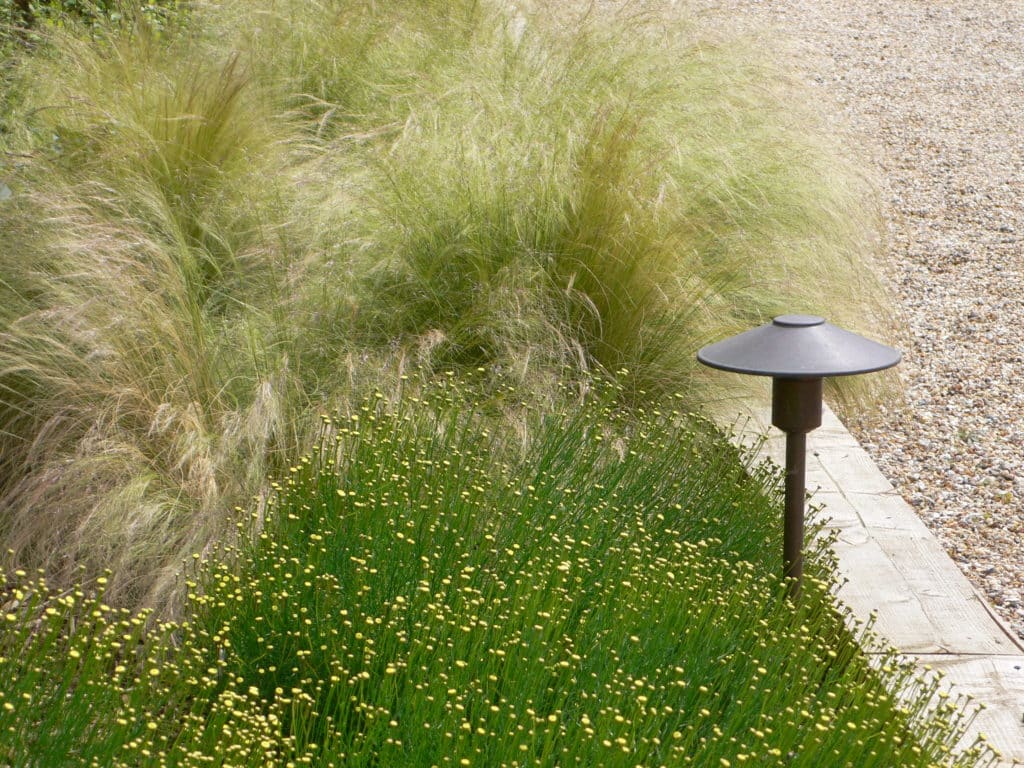
Just look at these fluffy grasses. I would not be able to walk past these without brushing my hand over them, they’re so tactile. Once again, the grasses pick up on the colour of the flowers next to them. However, when the flowers have finished, the grasses will still be looking resplendent.
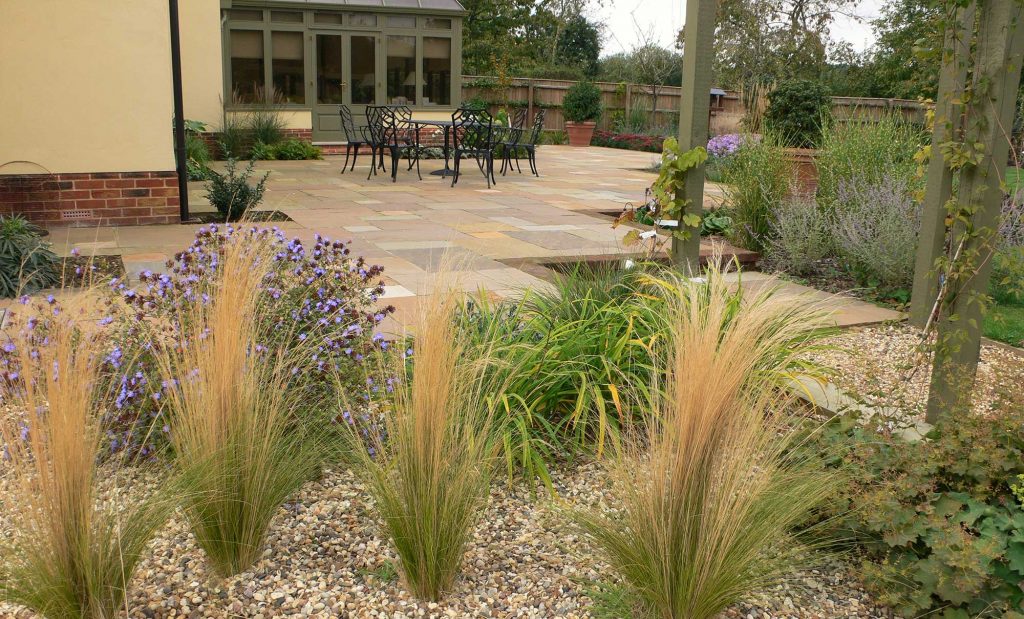
I adore the shape and the colour of these grasses. This is a relatively new border. If we were to visit in 12 months time there would be less space between the plants and that purple michaelmas daisy would peeping though the fronds of grasses. Notice too how the plants compliment the rich hues of the hard landscaping hard landscaping and the light texture of the gravel mulch. This plant combination would look very different against a black granite patio or a woodchip mulch.
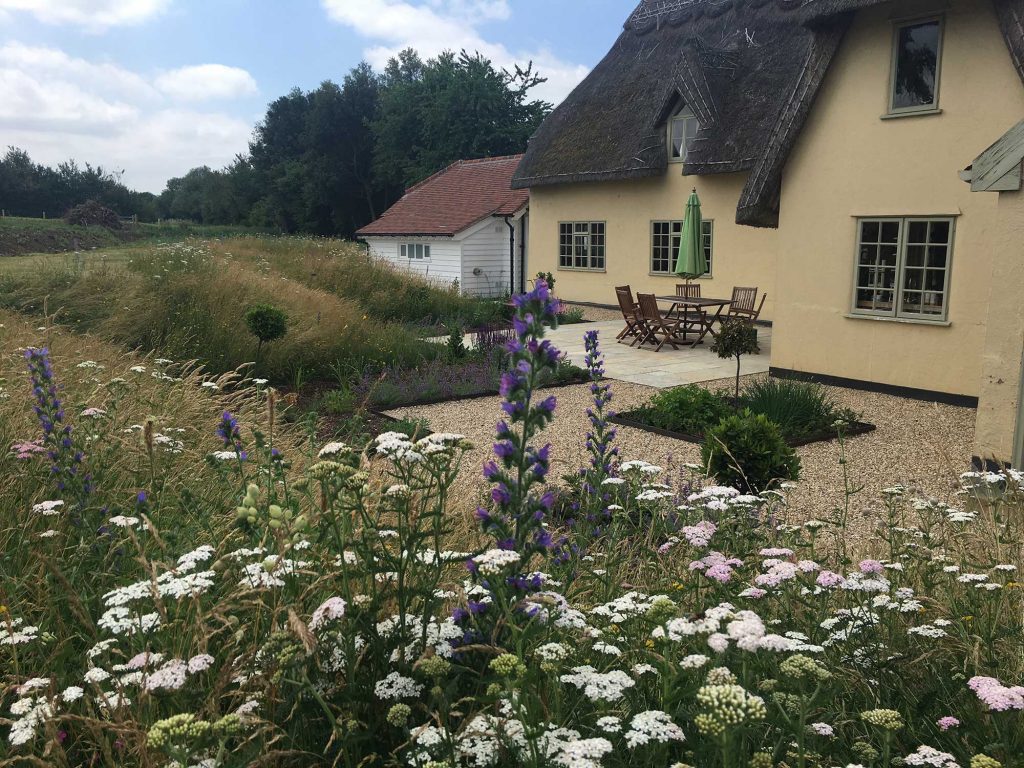
My final choice of plant combinations has a wonderfully natural feel. This is a garden makeover near Ongar, Essex. It’s a large rural garden, surrounded by fields and so it seemed only right to merge it with the adjacent countryside. We’ve used a mix of wildflowers and grasses to stabilise these slopes and to wrap the house with beauty. This type of planting offers lots of interest. Bees and birds will visit it, the flowering pattern will change on an almost daily basis. Colours will be vibrant in early summer and then soften to a gentle autumn glow. Maintenance couldn’t be simpler. Just mow it once a year. That’s all. Imagine all that beauty with barely any work!
exploring plant combinations
If I remember rightly from my statistics lessons in maths; hundreds of plant species and varieties means millions of different combinations.
When you start exploring the possibilities, it’s best to start by looking at the conditions your plants will be growing in. That will narrow down your choices a little. For example, is your border sunny or shaded? Do you know what type of soil you have? wet, dry, acid or alkaline? And how much time do you have for nurturing the plants.
If you would like help to design and/or create a planting scheme with exciting plant combinations, please get in touch for an informal chat. Holland Landscapes can help with garden design via our sister-company Tapestry Design Studios. We can also help you to improve your soil, set out and plant your wonderful horticultural display.
Further Reading
Peruse our portfolio to find inspiration for your own plant combinations
How to turn your outdoor space into a garden fit for a millionaire




Sorry, the comment form is closed at this time.